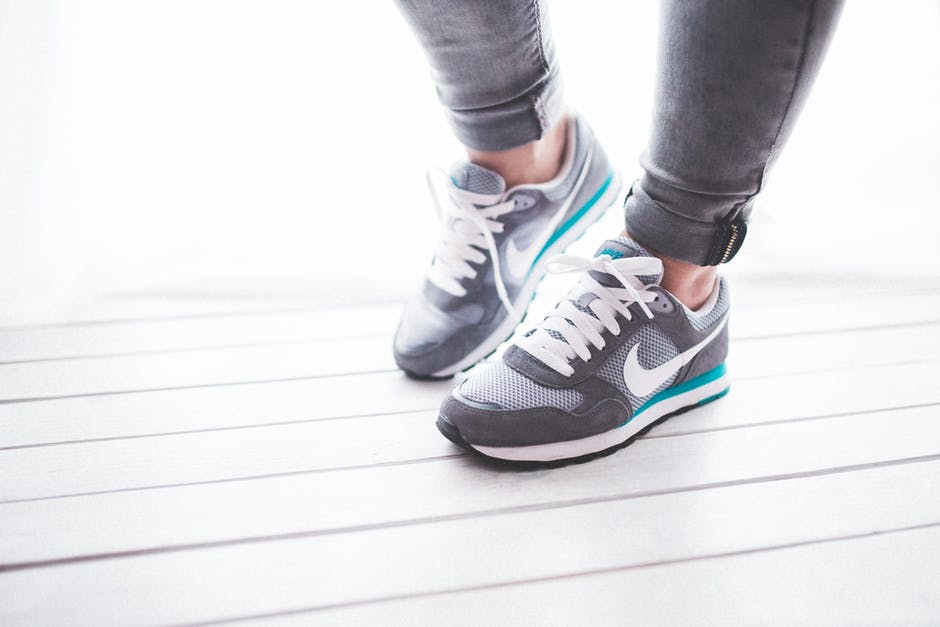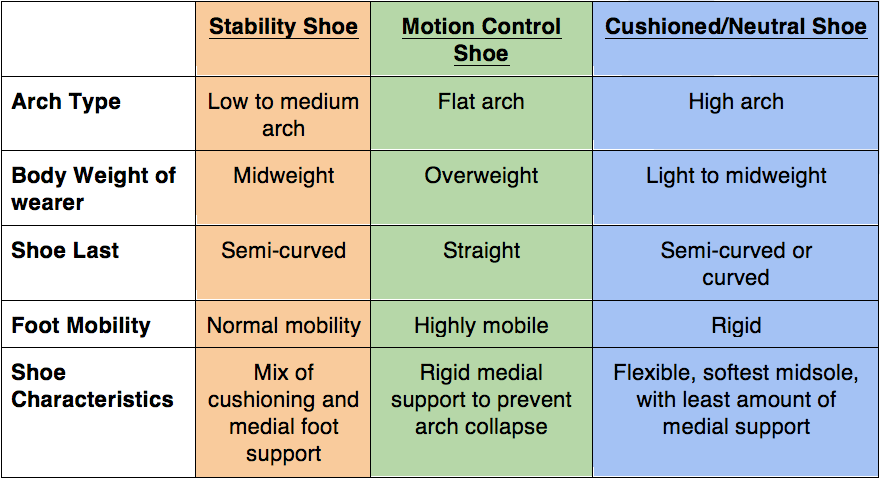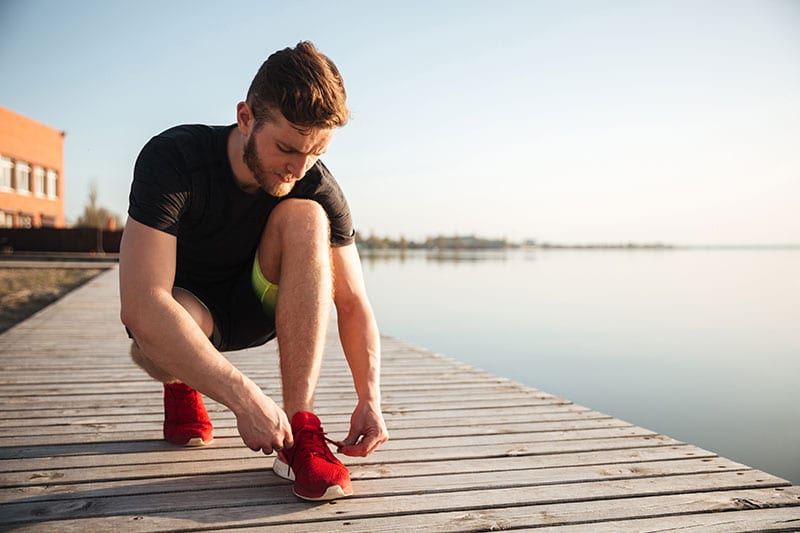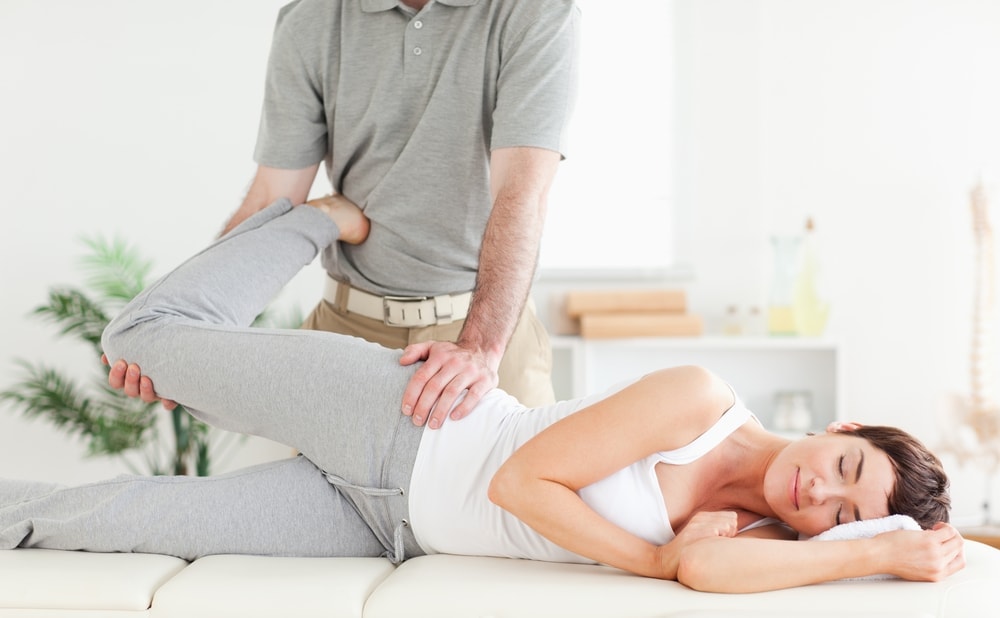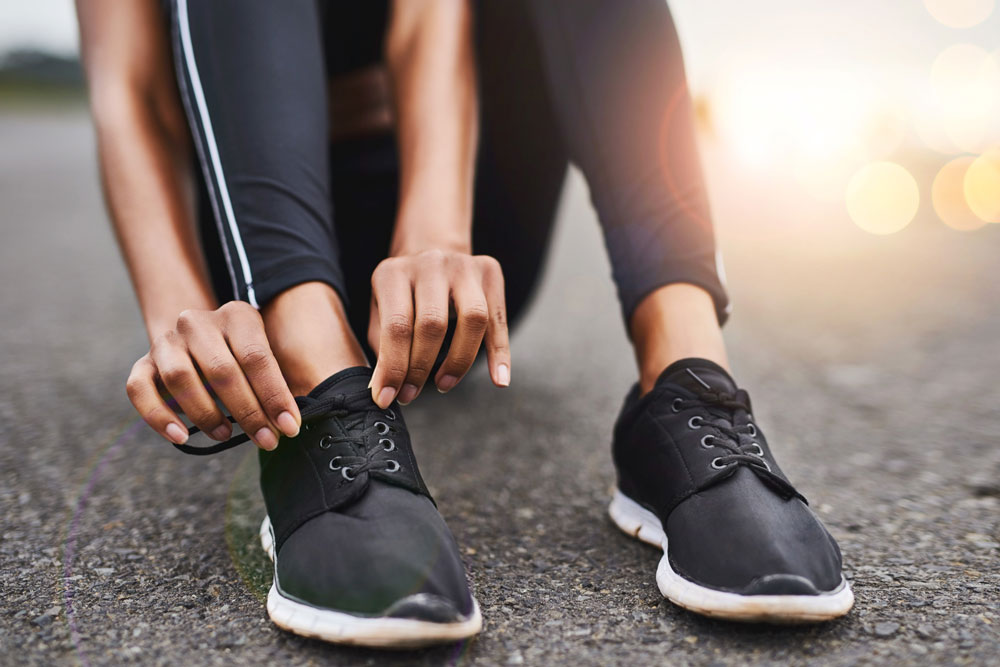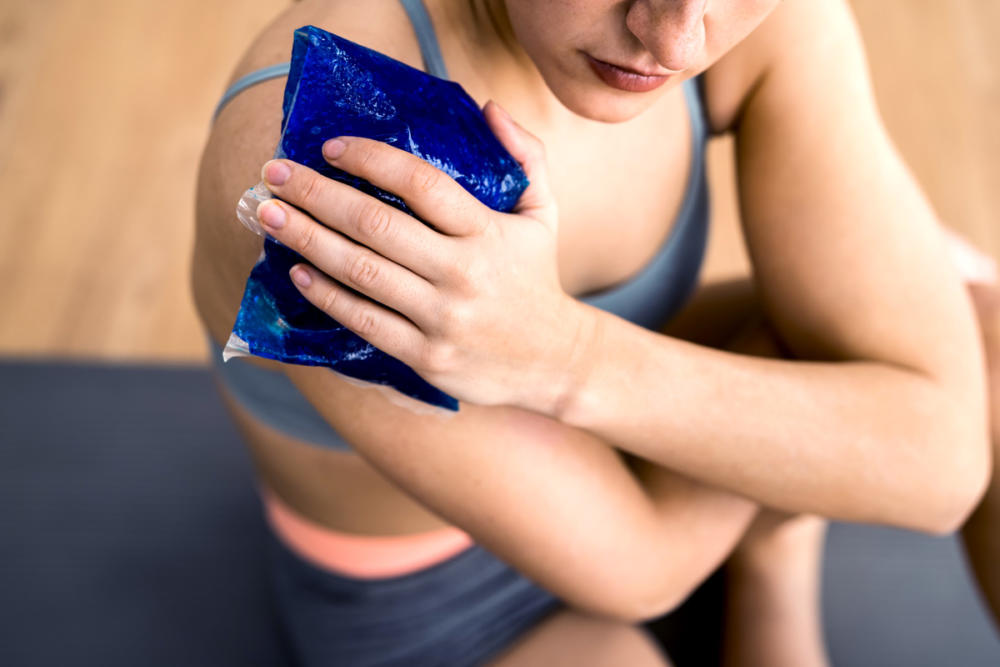In recent years, there has been a surge in running shoe trends. We are drowning in a sea of shoes that claim to help with specific injuries and foot problems or create more efficient running patterns. With so many brands and styles to choose from, it can be difficult to determine which one is best for you, but the difference can impact your injury prevention and injury recovery.
When purchasing running shoes it is important to have a general knowledge of basic terminology in order to make the best footwear selection. Terms such as “minimalist,” “heel-toe drop,” “motion control,” and “stability” can really muddy the waters, potentially leading to a poor shoe selection. The information below will help you to make better sense of it all.
The Running Shoe Basics
- Minimalist shoes have a low heel-to-toe drop, which may help to distribute impact forces. Minimalist running is characterized by a soft forefoot strike and short quick strides. Some view this type of running as a method for limiting overuse and related injuries.
- Maximalist shoes feature a high-heel-to-toe drop. Maximalist running encourages an increased heel strike.
- Cushioned shoes are meant to attenuate shock better than a “neutral” shoe.
- Motion-control shoes control rear-foot motion.
- Heel-toe drop is the difference in height of the sole from the back to the front of the shoe, measured in millimeters; the average is 10 mm.
- Heel counter is a reinforced section of the shoe that cups the heel and controls motion.
- Shoe last relates to shoe curvature, and there are three types:
- Curved: 25 degrees forefoot adduction, flexible (ideal for runners with rigid arch, those who under pronate)
- Semi-curved: 7-10 degrees forefoot adduction
- Straight: 0 degrees adduction (ideal for flat-footed or heavier runners)
- Toe spring is the upward arching of the front of the shoe aimed to increase forward momentum.
- Midsole is the mid-portion of the shoe. The midsole is the most important component of a running shoe and provides cushion, stability, or motion control.
Picking the Right Shoe
Despite the evolution of running shoes, runners still experience a high injury rate. Approximately 50% of runners experience an injury annually. Certain anatomical variables may correlate to specific injuries.
- For example, low arches (or pes planus) equate to having flat feet. It is often characterized by hypermobility and over-pronation, which can lead to patellofemoral pain, posterior tibial tendonitis, plantar fasciitis, and metatarsal fractures.
- High arches (or pes cavus) often correlate with under-pronation and a less flexible foot thus contributing to less shock absorption. This can be further compromised by decreased calf flexibility. Both of which may contribute to injuries such as stress fractures, Achilles tendonitis, and plantar fasciitis.
- Other risk factors for running injuries include runners’ age, weight, knee alignment, flexibility, training-related factors (such as frequency of running and terrain), rate of distance progression, distance, age of shoes, and pace.
Over time, there has been an increase in the development of specific running shoes and orthotics to accommodate variable arches and foot shapes. Ideally, footwear recommendations should be made on individual running characteristics and mechanics. If the mechanical analysis is not available, a shoe recommendation can be made based on arch type.
As a physical therapist, when speaking to a patient with a running-related injury, we also inquire about our patient’s current running shoes, such as:
- Age of shoes (when purchased)
- Number of days worn
- Total mileage
- Replacement frequency
- Interestingly, new shoes can lose some of their shock-absorbing capability, even if they haven’t been worn, after 12-24 months.
- Ask to examine worn running shoes to reveal the shoes’ functional age and wear pattern — which may be helpful for making proper shoe recommendations.
Lastly, orthotics are commonly used to reduce movement-related issues, correct alignment, and increase cushioning. Orthotics are also helpful if standard running shoes do not provide adequate correction or if one foot needs more correction than the other. Although most of this information is related to running injuries and shoes, the concepts hold true for all shoe styles and all people, including children. While popular shoe styles may be “cute” or “stylish,” they often do not offer the best support. Over-the-counter arch supports may, in some cases, offer an alternative to reinforcing arches without compromising style or shoe preference.

